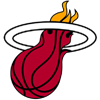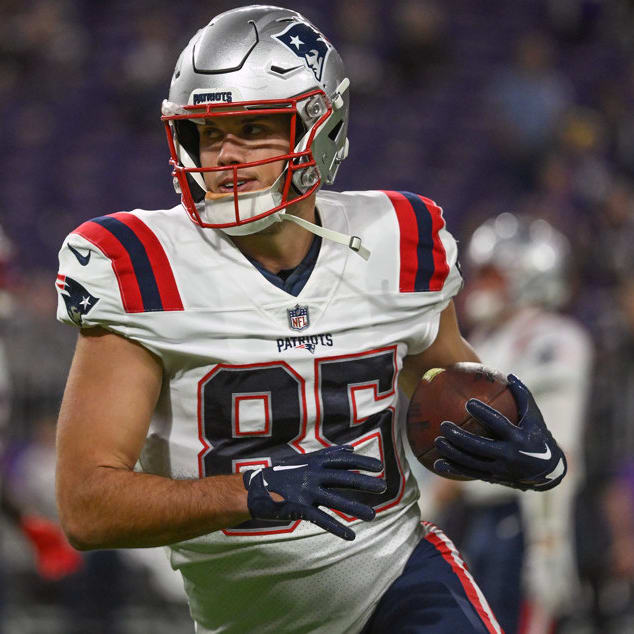This edition of the Job Battles series is the third part in however many parts it takes to get through the running backs. You can view the first edition (Cincinnati/Carolina/Denver) here, and the second installment (Green Bay/Indianapolis) here.
This one will look at Jacksonville (behind Etienne), Kansas City (behind Pacheco/Edwards-Helaire), and the Chargers.
The competitions are listed alphabetically for team location, and the players are listed in order of years in the NFL. A general verdict is issued at the end of each blurb.
D'Ernest Johnson vs. Tank Bigsby vs. Keilan Robinson, JAC
Anyone within earshot of me last year was force-fed a heavy dose of anti-Bigsby propaganda, and similarly after an awful rookie season it's difficult for me to see Bigsby as a serious player. Still, even Bigsby's critics couldn't have anticipated just how badly his rookie season would go. Bigsby was a mediocre prospect out of Auburn, but for the Jaguars last year he was one of the very worst running backs in NFL history. He's probably not that bad, but he's no more than an RB3 on any normal team. Granted, the Jaguars do have to pretend they value Bigsby now that Trent Baalke wasted an obviously ill-conceived third-round pick on the guy, but last year Johnson was the better player.
To get outplayed by Johnson is not a good sign. Johnson runs a 4.85-second 40 at 200 pounds. If you get outplayed by Johnson at any point you're liable to get outplayed
This edition of the Job Battles series is the third part in however many parts it takes to get through the running backs. You can view the first edition (Cincinnati/Carolina/Denver) here, and the second installment (Green Bay/Indianapolis) here.
This one will look at Jacksonville (behind Etienne), Kansas City (behind Pacheco/Edwards-Helaire), and the Chargers.
The competitions are listed alphabetically for team location, and the players are listed in order of years in the NFL. A general verdict is issued at the end of each blurb.
D'Ernest Johnson vs. Tank Bigsby vs. Keilan Robinson, JAC
Anyone within earshot of me last year was force-fed a heavy dose of anti-Bigsby propaganda, and similarly after an awful rookie season it's difficult for me to see Bigsby as a serious player. Still, even Bigsby's critics couldn't have anticipated just how badly his rookie season would go. Bigsby was a mediocre prospect out of Auburn, but for the Jaguars last year he was one of the very worst running backs in NFL history. He's probably not that bad, but he's no more than an RB3 on any normal team. Granted, the Jaguars do have to pretend they value Bigsby now that Trent Baalke wasted an obviously ill-conceived third-round pick on the guy, but last year Johnson was the better player.
To get outplayed by Johnson is not a good sign. Johnson runs a 4.85-second 40 at 200 pounds. If you get outplayed by Johnson at any point you're liable to get outplayed by any NFL running back.
Robinson is an interesting new piece for the Jaguars as a rookie fifth-round pick, and at the very least he's a sharp contrast to Bigsby and Johnson. Whereas those two are slow, Robinson offers long-range speed (4.42-second 40), albeit on tiny frame (5-foot-8, 191 pounds) and with minimal from-scrimmage usage in college. Robinson finished his collegiate career with only 121 carries for 796 yards and eight touchdowns (6.6 YPC) while catching 35 receptions for 332 yards and three touchdowns in four years.
Robinson's limited usage is understandable at a glance given that Bijan Robinson, Roschon Johnson and Jonathon Brooks were all on his team at various points, but when you watch him play it's easy to recognize why Robinson was such a distant backup: he has no power and runs almost top-heavy despite carrying almost no mass to speak of. He's a draw back.
Baalke is a horrible GM for a lot of reasons, but running back may be his absolute worst position to evaluate. You might have noticed 2022 fifth-round pick Snoop Conner quietly disappeared to Dallas, and the depth chart behind Travis Etienne is a nightmare in the meantime. For wherever they land on the eventual Jacksonville depth chart, each of Johnson, Bigsby and Robinson projects as a negative rep relative to league average.
Verdict: Bigsby does more than he did in 2023 but will still play poorly if forced into action. Johnson will likely lose ground relative to 2023, both because of Bigsby and the introduction of Robinson. Robinson – something like a (very) poor man's Nyheim Hines – is nothing more than a draw back.
K. Ingram vs. D. Prince vs. Emani Bailey vs. Carson Steele, KC
We should assume Clyde Edwards-Helaire will be the primary backup to Isiah Pacheco. If Pacheco were to miss time Edwards-Helaire would likely play at least 30 snaps per game and maybe closer to around 45 snaps per game.
If Edwards-Helaire does not have as much job security as described in the previous paragraph then the role of the third running back behind Pacheco and Edwards-Helaire could pop up on the fantasy radar at some point this year. For now that competition appears to be between Ingram, Prince, Bailey and Steele. Prince spent all of 2023 on the practice squad while Ingram was added at the end of November. Bailey (TCU/Lafayette) and Steele (UCLA/Ball State) are both undrafted rookies.
None of these four is an inspiring prospect, but in the Chiefs offense practice squad types can still make a big fantasy impact at running back. Remember Darrel Williams? Williams was a fullback tweener who ran a 4.7, but because he could catch passes he peeled off a number of productive weeks just because defenses never paid any attention to him.
If Williams could make it in KC then Steele (6-foot-1, 228 pounds) might be able to provide a similar function, though Steele's 4.77-second pro day 40 is significantly worse yet than Williams' 4.72-second combine 40 at 225 pounds. Williams might have been a fullback tweener, but Steele is closer yet to the fullback end of the spectrum. Steele's best bet is probably the practice squad and a position switch. I see Steele as something like a poor man's Roschon Johnson.
Of the two undrafted rookies, Bailey likely has the better prospect profile. Bailey is a different type of running back than Steele – whereas Steele is oversized and slow, Bailey is undersized (5-foot-8, 202 pounds) and... not fast (4.61-second combine 40), but quick at least. In addition to being physically quick, Bailey seems to process quickly as a runner and maneuvers with the a decisive fearlessness that you don't always see at running back. Bailey's instant processing helps offset the mediocre speed. Bailey's wheels can only take him so fast and he can only conjure so much power at his tiny build, but when it comes to the Knowing How part of running Bailey clearly is a natural. He also has an extensive history of running advanced routes, which could hasten Bailey's development as a pass catcher in the NFL. Think of Bailey maybe as you would Raheem Blackshear or Bucky Irving.
Prince is an interesting third consideration and maybe has the most fantasy upside of the group due to his uncommon combination of power and speed with a 4.41-second combine 40 at 216 pounds. Pacheco and Damien Williams before that were great fits for the Chiefs offense if only because of their speed, because Patrick Mahomes usually clears space with his throwing threat and therefore vision is less necessary to find space as a runner. If the space comes easy then you might as well stock up on speed to hit those gaps as quickly possible, and Prince should be able to do that. The question, then, is why Prince spent all of last year on the practice squad after going undrafted at Tulsa. For a big, fast guy Prince didn't play at Tulsa as much as you'd expect, and it might have to do with inadequacies on passing downs. Perhaps Prince will never clear that bar, but if he does then he almost instantly becomes a similar presence as Pacheco.
Ingram might seem like a bum given his horrific NFL rushing stats to this point (114 yards on 62 carries), and at the very least it's safe to say Ingram has an uneven skill set. Ingram is a 220-pound back who runs like a 190-pounder, which he sometimes gets away with because Ingram is still rather athletic. Given that he was otherwise productive at Texas and USC, it seems like Ingram's struggles in Arizona were informed by the poor overall health of the offense, including its run blocking. In Kansas City there would be no similar stress as a ballcarrier, and Ingram might become productive again if only because the conditions in Kansas City resemble those of Texas and USC sooner than the Cardinals would. Not just that, but Ingram has a good frame for blitz pickup and has shown plus pass-catching ability in the past. Ingram doesn't run as tough as he should, but he's still a standout athlete who can catch and run in the open field.
Verdict: This one is just about impossible to call, but Steele is likely in fourth place. Ingram, Prince and Bailey are difficult to rank otherwise because your preference would largely just depend on the task in question. If you need someone to peel off an 80-yard touchdown run, you probably want Prince. If you're looking for a change-of-pace back who can catch passes you'd probably want Bailey. If you're mostly just hoping for a 220-pound back who can catch and block then Ingram might be your guy. Furthermore, any of Ingram, Prince or Bailey would project for favorable from-scrimmage production if they were to get snaps in the Kansas City offense. There's nothing wrong with using a final bench spot on any of the three.
G. Edwards vs. J.K. Dobbins vs. Kimani Vidal vs. Isaiah Spiller, LAC
Spiller isn't a candidate to take snaps from the likes of Dobbins or Edwards, but it's possible that the Chargers keep Spiller as a power-oriented fourth runner – a Break Glass In Case of Emergency backup behind the burly Edwards. Dobbins and Vidal are likely both better than Spiller, but if you quite simply need a 220-pounder then Spiller has an edge on them both. Bad as Spiller's NFL struggles have been, it's worth recalling that he won't be 23 until August 9.
As much as Spiller outweighs Vidal, Vidal packs a serious punch himself. Vidal is a classic case of Short Not Small, because at 5-foot-8, 213 pounds Vidal might be short, but he's like a lead cube even if so. As a defender you can't get your pads under Vidal's, so he has a way of driving you back even if you're much bigger. Unlike Spiller, Vidal has wheels to run with. Spiller's 4.64-second pro day 40 hints at 4.7 combine speed, whereas Vidal logged a 4.46-second 40 at the combine. Vidal went in the sixth round of his draft and Spiller the fourth of his, but Vidal is clearly the better prospect. Spiller ran that 4.64 pro day 40 at only four pounds heavier than Vidal was during his 4.46 combine time.
Good as Vidal might be, he was still a sixth-round pick. Favoritism is rarely applied to the benefit of sixth-round pick rookies. Vidal needs some luck to get onto the field.
Indeed, if Edwards and Dobbins are healthy they are a formidable duo – as formidable of a duo as you'll find. Both players have struggled with injuries, especially Dobbins, but when on the field both Edwards and Dobbins are highly capable.
The Chargers signed Edwards to a two-year, $6.5 million deal and Dobbins to a one-year, $1.6 million deal. Both are bargain-type contracts, but they also both speak to a specific vision of the two players. Basically, the takeaway is that while the Chargers are not paying much for either of Edwards or Dobbins, the Chargers clearly want Edwards and Dobbins to be their top two running backs.
Edwards has a long injury history going back to his days at Miami (FL), and Dobbins is attempting to return from a Week 1 Achilles' tendon tear one year after he tried to return from a multi-ligament knee tear. Those details helped make Edwards and Dobbins more affordable to the Chargers, but it's still those two the Chargers have in mind for their 2024 backfield usage.
Those injury histories are why Vidal and even Spiller might become relevant in 2024, but in the meantime it should be understood that a sixth-round pick rookie isn't just going to push aside Edwards and Dobbins, both of whom were among the most productive NFL running backs when healthy in Baltimore.
Verdict: Edwards and Dobbins both play around 30 snaps per week, with Edwards specializing in power runner while Dobbins takes everything else. If Edwards or Dobbins were to miss time, Vidal would be a fully-qualified replacement. Spiller lingers as a power-oriented wildcard.






































